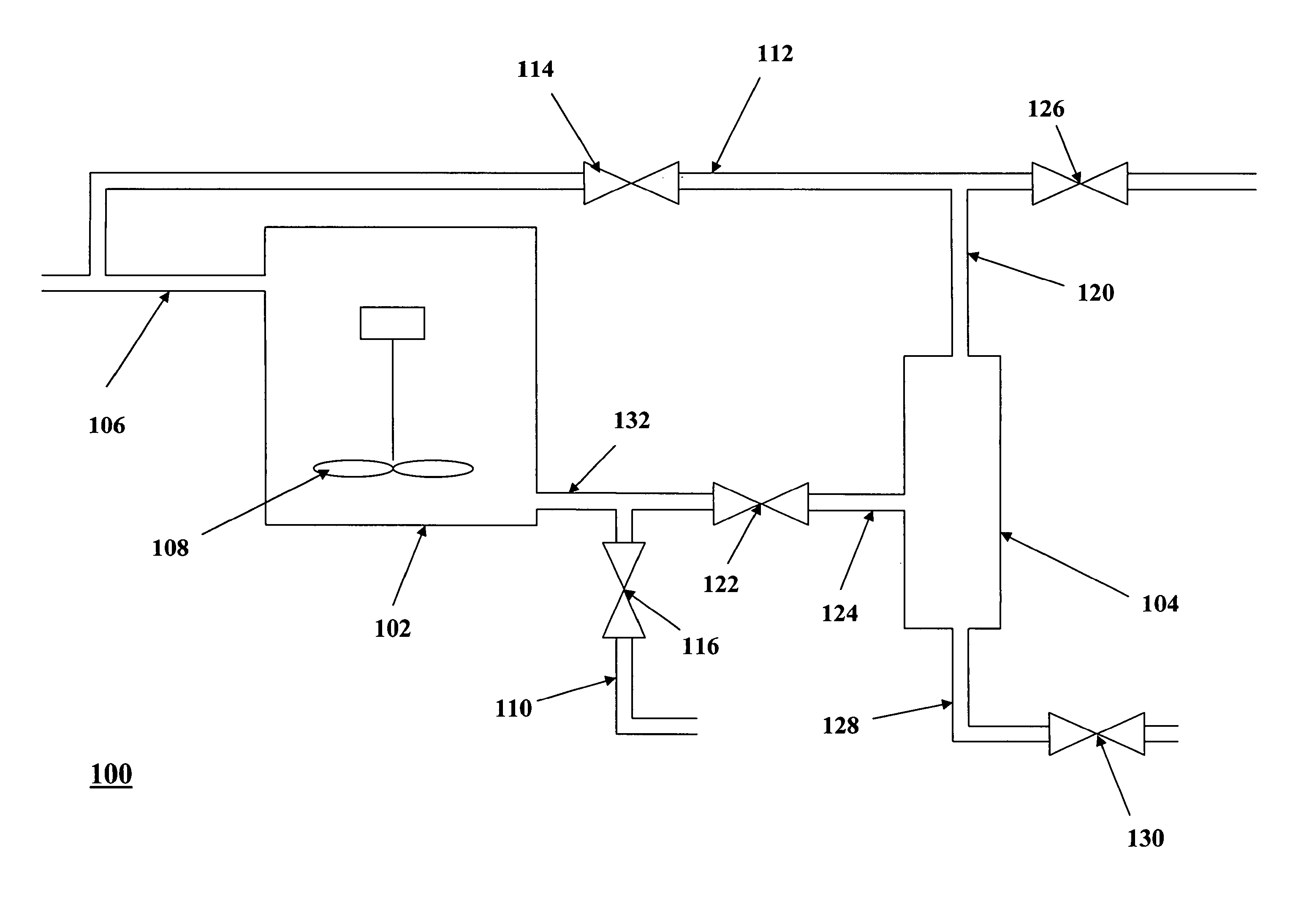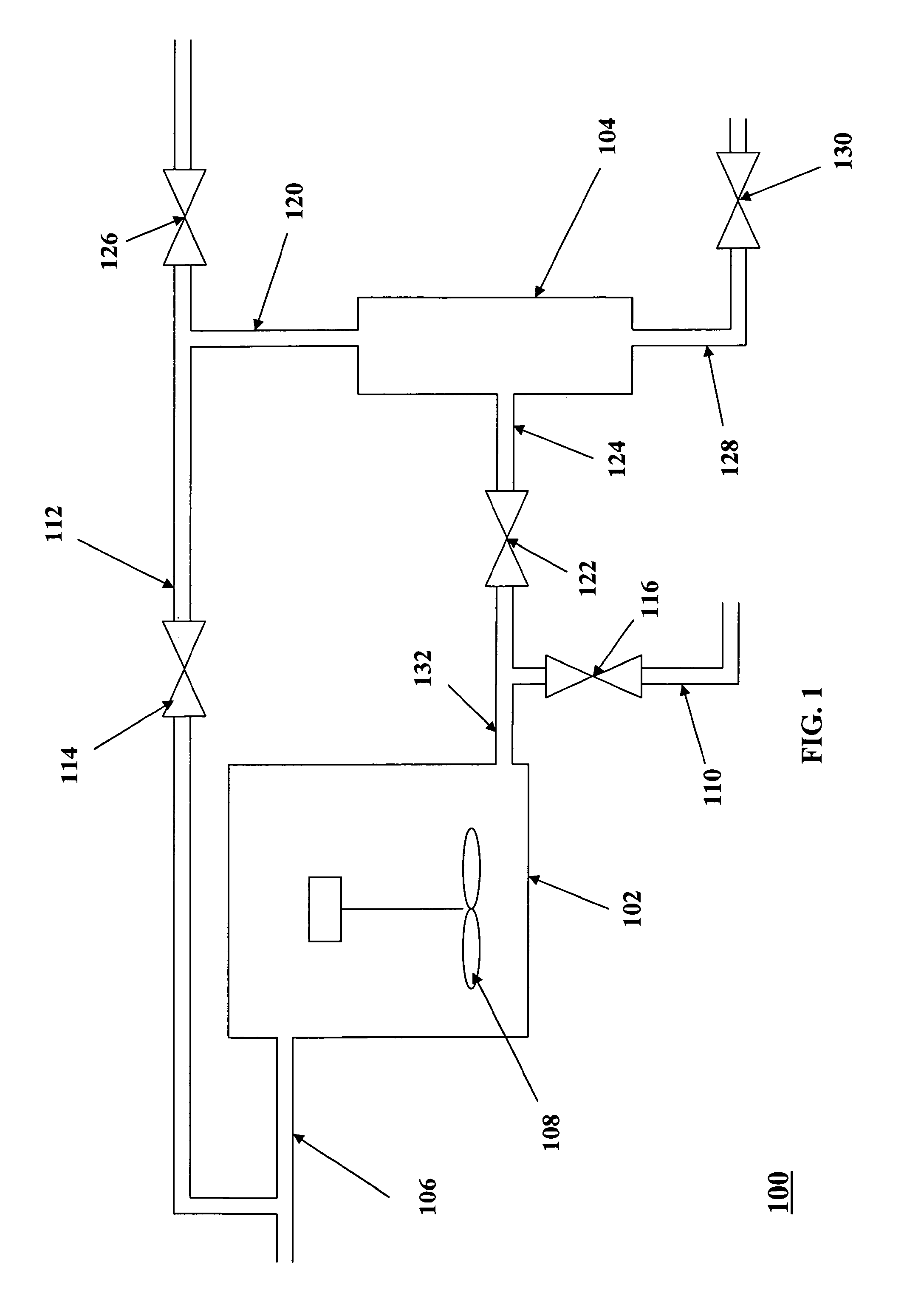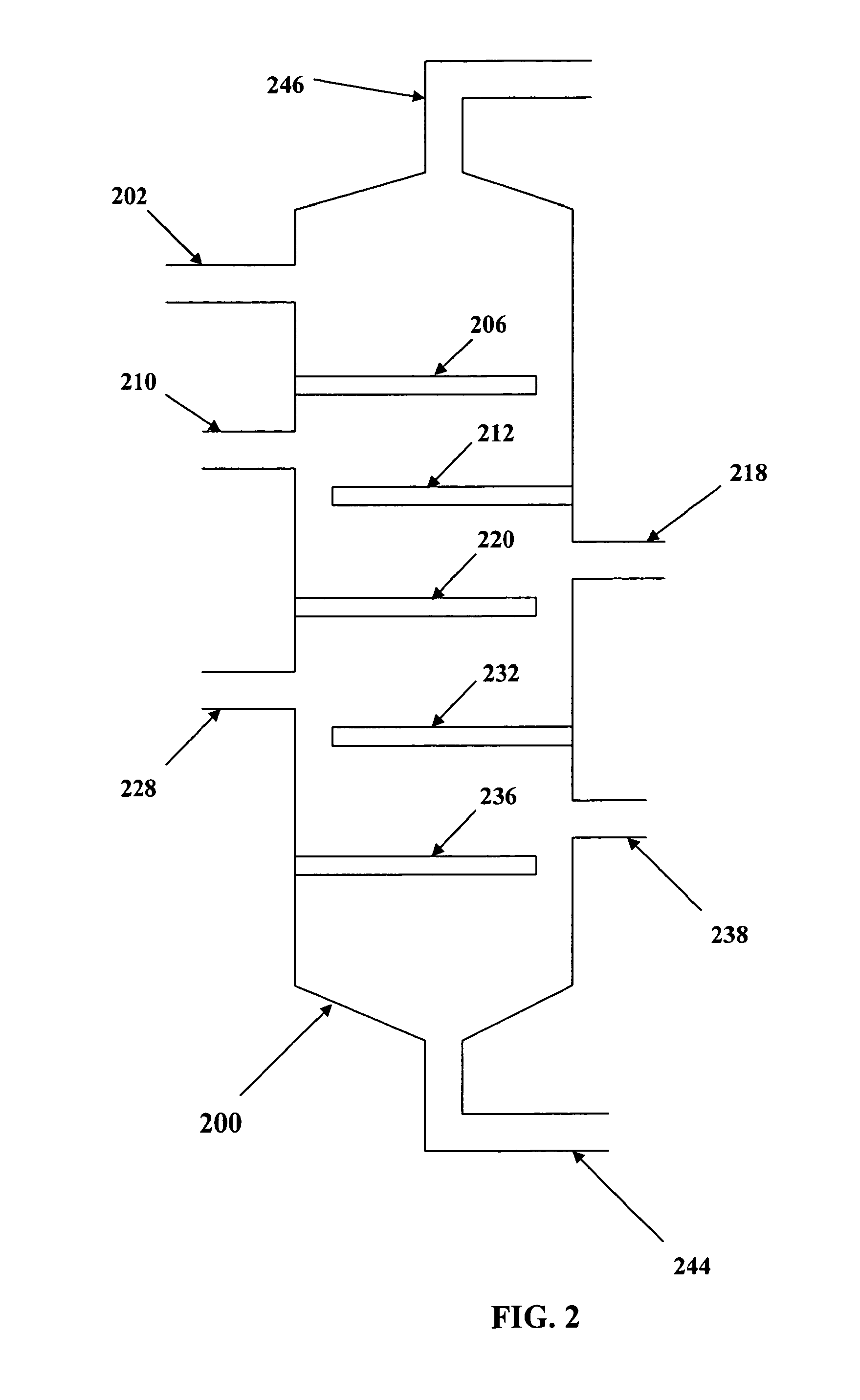Catalytic processes for preparing estolide base oils
a technology of catalytic processes and base oils, which is applied in the direction of esters preparation by oligomerisation, fatty acid chemical modification, carboxylic acid esters separation/purification, etc., can solve the problem of inability to improve biodegradability
- Summary
- Abstract
- Description
- Claims
- Application Information
AI Technical Summary
Benefits of technology
Problems solved by technology
Method used
Image
Examples
example 1
[0243]The acid catalyst reaction was conducted in a 50 gallon Pfaudler RT-Series glass-lined reactor. Oleic acid (65 Kg, OL 700, Twin Rivers) was added to the reactor with 70% perchloric acid (992.3 mL, Aldrich Cat#244252) and heated to 60° C. in vacuo (10 torr abs) for 24 hrs while continuously being agitated. After 24 hours the vacuum was released. 2-Ethylhexanol (29.97 Kg) was then added to the reactor and the vacuum was restored. The reaction was allowed to continue under the same conditions (60° C., 10 torr abs) for 4 more hours. At which time, KOH (645.58 g) was dissolved in 90% ethanol / water (5000 mL, 90% EtOH by volume) and added to the reactor to quench the acid. The solution was then allowed to cool for approximately 30 minutes. The contents of the reactor were then pumped through a 1 micron (μ) filter into an accumulator to filter out the salts. Water was then added to the accumulator to wash the oil. The two liquid phases were thoroughly mixed together for approximately ...
example 2
[0244]Bronsted and Lewis acid catalysts were tested for their ability to oligomerize fatty acid reactants into estolide products. In a glass vessel, oleic acid (1.0 equiv, 2.0 g, OL 700, Twin Rivers) was added with the catalyst under continuous stirring. The crude reaction product was then filtered and subjected to NMR analysis to confirm the formation of the estolide product. HPLC analysis was then used to determine the overall yield of the estolide product. Results for each of the catalysts are provided in Table 1 below:
[0245]
TABLE 1TempTimeYieldCatalystLoading / Equiv.(° C.)(hrs)(%)Amberlyst BD2045 wt. %1401820.3Amberlyst 1545 wt. %801845.2Amberlyst 3545 wt. %801837.6Fe(OTf)30.05 eq.601856.1Bi(OTf)30.05 eq.601856.0Dowex Monosphere 5 wt. %1101217.2DR-2030Nafion SAC-1345 wt. %1101616.4AgOTf0.05 eq.1101618.2Montmorillonite K1030%11014-1822.8Zn(OTf)20.05 eq.1401816.0Fe2O30.05 eq.601853.8TfOH0.15 eq.Fe2(SO4)30.05 eq.110189.5Fe2(SO4)30.05 eq.601849.8TfOH0.15 eq.FeCl30.05 eq.601848.8TfOH0...
example 3
[0246]The ability to recover catalyst from catalytic reaction(s) set forth in Example 2 was tested. After the reaction was complete, the crude, unfiltered reaction mixture was cooled and subjected to workup conditions that allowed for recovery and reuse of the catalyst. Results are set forth in Table 2.
[0247]
TABLE 2CatalystConditions% RecoveryFe(OTf)3Cooled reaction mixture was washed>90%3X with cold water. Combinedaqueous phase was heated and driedunder vacuum.Bi(OTf)3Hexanes are added to the cooled—reaction mixture to precipitate thecatalyst, which is filtered and isolated.
PUM
 Login to View More
Login to View More Abstract
Description
Claims
Application Information
 Login to View More
Login to View More - R&D
- Intellectual Property
- Life Sciences
- Materials
- Tech Scout
- Unparalleled Data Quality
- Higher Quality Content
- 60% Fewer Hallucinations
Browse by: Latest US Patents, China's latest patents, Technical Efficacy Thesaurus, Application Domain, Technology Topic, Popular Technical Reports.
© 2025 PatSnap. All rights reserved.Legal|Privacy policy|Modern Slavery Act Transparency Statement|Sitemap|About US| Contact US: help@patsnap.com



